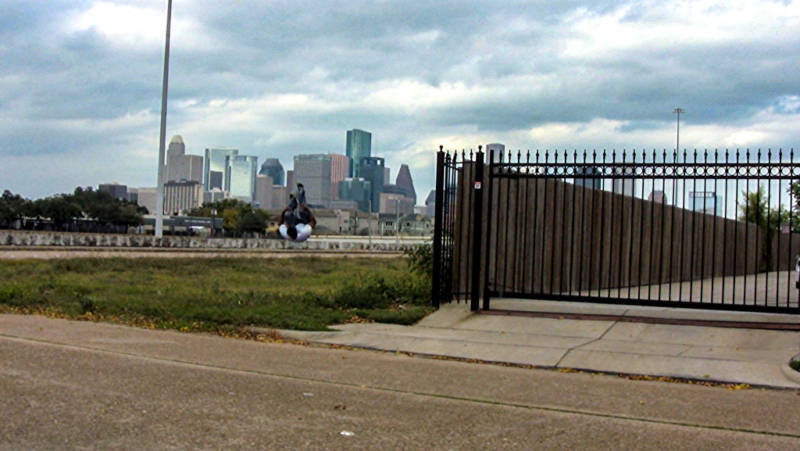“For reasons unknown I saw him running,” says a voiceover in Carrie Mae Weems’ 15-minute video People of a Darker Hue. The piece poetically and specifically commemorates the unarmed black men, women and children shot and killed by police leading up to the video’s 2016 creation, but that precise bit of dialogue could also subtitle Steffani Jemison’s Escaped Lunatic. In that piece, staged in empty lots and playgrounds around Houston, four members of a local parkour team run across the static shots, their acrobatic movements offering multiple interpretations. Are they fleeing something, chasing something, or simply—joyfully—running?
Both videos featured in the San Jose Museum of Art’s Screen Acts: Women in Film and Video, on view through June 30. Curated by Kathryn Wade and Rory Padeken around ideas of cinematic tropes (such as Jemison’s chase sequences), even more compelling is all five artists’ ability to skillfully depict or describe action without offering explanation. (I know this is happening, but I don’t know why.) The results include dreamlike parables, fragmented documentations or, in Weems’ case, a heartfelt, expansive eulogy.

Sometimes even two points of view offer no definitive truth. In Jazmín López’s Juego Vivo, two back-to-back views of the same scene create a harrowing vision of a child’s game made real—and possibly deadly. Sometimes images are at odds with words. Elena Damiani’s Intersticio muses on non-specific sites, providing enigmatic narration over a slideshow of found images that have the dispassionate, scientific focus of a geologist’s fieldnotes.
And sometimes there’s simply no way to encompass everything informing a particular moment. In the Ethnocine Collective’s For My Art, five female performance artists in Yangon, Myanmar enact their art in the streets, markets, malls and docks, enlisting ordinary people as their collaborators and audiences. Capturing non-art audiences regarding performances with nervousness, laughter, suspicion and nonchalance, For My Art emphasizes the bravery and vulnerability inherent in taking art out of white-wall settings, while gathering some of the sights, sounds and imagined smells of the life that inspire these artists.
Again and again, despite the visual evidence on display, the artists of Screen Acts prove the impossibility of a single source of truth—which itself is a refreshing reminder of art’s ambiguous and challenging nature, all in just under one hour of looping play.


